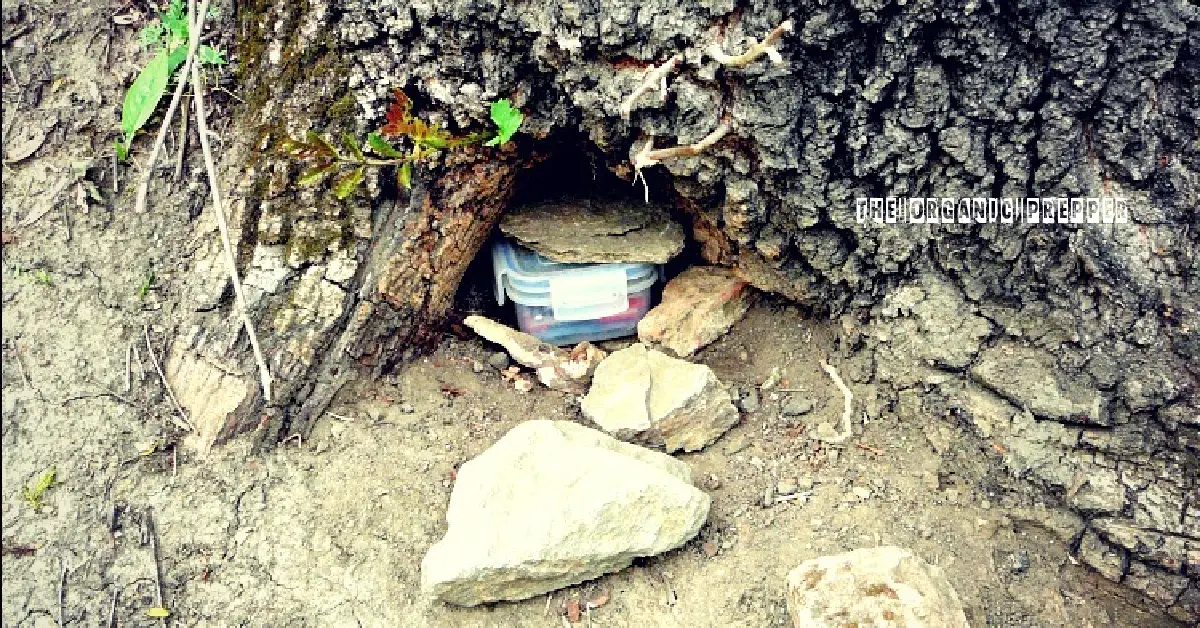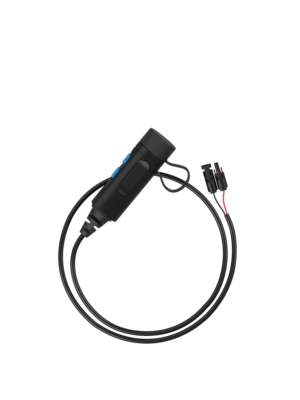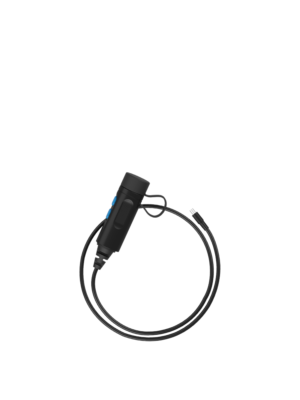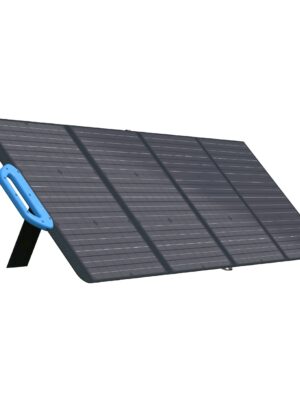What You Need to Know About Survival Caches Leave a comment
(Psst: The FTC wants me to remind you that this website contains affiliate links. That means if you make a purchase from a link you click on, I might receive a small commission. This does not increase the price you’ll pay for that item nor does it decrease the awesomeness of the item. ~ Daisy)
Author of The Dark Secrets of SHTF Survival and the online course SHTF Survival Boot Camp
I have used survival caches as part of my prepping for a long time. This is because my experience that says no matter how well you are prepared, one day you may find yourself out with only what you have on you, so any help that you can get in that moment will be important
Why should you have survival caches?
There is a big talk behind having your important stuff hidden somewhere in case that you might need it, but let’s try to simplify it.
Mistakes
A really big SHTF event will usually come as a surprise for us, no matter how much we like to think that we will recognize the moment. In a situation that comes suddenly, you will make mistakes for sure.
You will not operate 100% in accordance with your survival plan – no one does. So even if today you think that you covered everything in great detail you will (because of many reasons) most likely fail in some field.
In a situation like that, some equipment hidden in a couple of places can give you a lot of help.
Actually, it can save your life.
Losing everything
No matter how hardened you think that your home is, your stuff inside your home can change in a matter of days, or sometimes in a matter of minutes actually.
You can be in one moment the best prepper on your street, with everything that your family needs to survive, and next day you can be evicted with only the things that you can carry in your pockets.
Or you may be forced to run for your life, leaving everything in your home, all your preps, no matter how wll armed you are. Some people like to think this can never happen but they are wrong.
You may be even labeled when the SHTF as a person who by the law needs to give all your preps to the “goverment” or whoever gonna have force on their side in a particular moment.
You never know.
Bugging out
People usually think about bugging out like it is gonna happened just like they imagined it or planned it, while in reality, it may be completely different.
Caches on your bug-out route should help you to resolve that change of plans.
Not to mention that your bug-out trip may start out with you not at your home, or without all your bug out bags for another reason.
The philosophy of survival caches
We should simplify it and use the words why, what, where, how, and when.
We went through the why details above, and you have also to add your own personal circumstances there, just like always.
What?
One basic rule that I like to implement is: never cache something that you can not afford to lose.
So for example, if you have only one weapon, and you want to cache it, your survival philosophy might be wrong and you need to reconsider it.
The usual response here is that you do not have enough weapons, so you need to work on solving that, not to mention that it is pretty strange not to have that one and only weapon close to you, not buried somewhere.
Another thing that I use is the rule that the cache (if someone else found it) cannot be traced to me, so no, I am not caching my important papers there.
However, I do keep there some tools that are illegal to keep it at my home (or wherever) with me, but that can help me a lot when SHTF.
It might look like this: you go through your prep list, choose items from every pillar of survival that will cover your basic needs in a particular amount of time (three days, week, month?) and put it in survival cache. Your money is the only limit.
For example:
- Medicine: antibiotics treatment, wound treatment, your existing medical condition treatment, antidiarrheal pills, water treatment, etc
- Fire: fire cubes, lighters, flints, matches…
- Food: power bars, MREs, quick soups, canned goods
And so on and so on.
It is completely based on your wishes and the amount of money you want to invest in this.
I do not like big caches. I would rather have more small caches. It is partly because of my budget, but the bigger and more important reason is that based on my experience it is better to have more chances. Usually half of your caches will be inacessible to you when SHTF.
Either it is going to be dangerous to go there, or you are not gonna have a chance to go and take it, or any combination of this.
If your main reason for having survival caches is as a help on your way to BOL you need to factor in the very high probability that the route that you plan and the route that you will take to your BOL will be different, This could be because of many reasons (angry mob, looters, police, fire, whatever). It’s better to have more caches that are not on the planned route but also on alternative routes there.
How?
There is advice like “you need to bury it” or “never put it in building” or similar.
But remember that all of this is very specific to your situation and surroundings. You need to check how things work in your case only.
For example, I have two caches in an abandoned building 10 kilometers from me. It works for me because the building has been abandoned for the last 15 years. It probably will be abandoned until someone buys the land and destroys it. Hopefully, I will learn of that on time and remove my stuff from there, but even if not, I can afford it to lose that stuff.
Of course, the most common way is to bury it, but do not blindly look to bury it if that does not work for your own case.
For burying, I use water pipes (PVC), combined with plastic bags (bags in bags).
Are there better ways?
Yes, of course, there are probably very good brand name survival cache containers that will last much longer and keep stuff much better but I cannot afford it, and even if I could, I would invest that money in something that I find more important.
Where?
If you have more of the caches, you need to have some system of keeping the data where you planted all of that.
A GPS system works great for that, but remember that it can be gone one day. Having a map marked with places works well too, but in the wrong hands, it can leave you without anything.
The best thing is to keep it in your head, but again if you have a lot of caches, it might not work.
I heard a long time ago about a system of keeping track of your caches with photos.
In each place where you hid something, you take a photo of yourself with your family, dog or whatever. Just a regular photo from sightseeing, hiking, or taking a nature walk.
Then you will have a memory about the place of your cache that looks like a regular day out.
You can even add on the back of photo sentence of two in simple code so you can know what is in that cache.
Here is your imagination only limit.
I mean, having a map in your pocket or on your bookshelf with red circles and words like “gun, ammo, bandages, MREs” is very helpful but sometimes could get you into trouble.
Having a wall with photos above your desk with of you and your friends or family looks just like that – photos.
When?
It is the question that is the easiest to answer.
NOW.
Survival caches are things that you might never use, but if you gonna need it you probably gonna need it very hard, so start to work on it now.
Again, you can start small, with very small caches, based on your budget and see where that will lead you.
Don’t rely only on caches to survive.
Survival caches are just one aspect of survival preparedness. They are not the most important one, so do not invest a lot in it and fail to invest in something maybe more important.
I mean do not find yourself in the middle of the night when SHTF without everything useful just because all your cool stuff is buried 25 miles from you.
It is about balance.
Do you have any tips on caches?
Do you have advice about survival caches to add? Have you ever had a failed cache?
Let’s discuss it in the comments section.
About Selco:
Selco survived the Balkan war of the 90s in a city under siege, without electricity, running water, or food distribution. He is currently accepting students for his next physical course here.
In his online works, he gives an inside view of the reality of survival under the harshest conditions. He reviews what works and what doesn’t, tells you the hard lessons he learned, and shares how he prepares today.
He never stopped learning about survival and preparedness since the war. Regardless of what happens, chances are you will never experience extreme situations as Selco did. But you have the chance to learn from him and how he faced death for months.
Real survival is not romantic or idealistic. It is brutal, hard and unfair. Let Selco take you into that world.
Please Support Our Sponsors
Solar Power Generator Discounts Along With Free Shipping
- 10% OFF for Jackery Solar Generator 2000 Pro Series with code "JADEAL"
- 10% OFF for Jackery SolarSaga 200W Solar Panel with code "JADEAL"
- 10% OFF for Jackery Solar Generator 1500 Series with code "JADEAL"
- 10% OFF for Jackery Solar Generator 1000 Series with code "JADEAL"
- 10% OFF for Jackery Explorer 1500 Portable Power Station with code "JADEAL"
- 10% OFF for Jackery Explorer 1000 Pro Portable Power Station with code "JADEAL"
- 10% OFF for Jackery Explorer 500 Pro Portable Power Station with code "JADEAL"
- 10% OFF for Jackery Explorer 300 Pro Portable Power Station with code "JADEAL"
- 10% OFF for Jackery SolarSaga 100W Solar Panel with code "JADEAL"

The University of Georgia is represented by the Georgia Bulldogs . The Bulldogs participate in the Southeastern Conference's (SEC) Eastern Division of the NCAA.
They play their home games in the storied Sanford Stadium in Athens, Georgia. The first season in Georgia was in 1892. In 1942, 1980, and 2021, the Georgia Bulldogs won three national championships.
The Georgia Bulldogs have additionally been crowned the National Champion in four additional seasons by at least one polling organization (1920, 1927, 1946 and 1968).
The Georgia Bulldogs are tied for second place in conference history with their 15 conference titles, including 13 SEC titles, and their 59 bowl appearances, which ranks second all-time.
In addition, the program has produced five top picks in the National Football League (NFL) draft, two Heisman Trophy winners, numerous winners of various national honors, and many others.

Longhorns football represents the University of Texas in Austin often known as Texas, UT or the Texas Longhorns. The Longhorns represent the Big 12 Conference in the NCAA Division. They play in Austin, Texas, at the Darrell K. Royal-Texas Memorial Stadium.
The Texas Longhorns are ranked third and seventh, respectively, in terms of all-time wins and win-loss records, with over 900 victories and an overall win-loss percentage of.705.
The legendary program also boasts four national titles, 32 conference titles, 100 First Team All-Americans, and two Heisman Trophy winners.
Get your Texas Longhorns Revival T-Shirt today. The Texas Longhorns Rustic Revival shirt is also a fan favorite.
Many college sports fans like to wear their gear all around town, get your Texas Longhorns Centered gear and show your support.





 Gettr
Gettr














